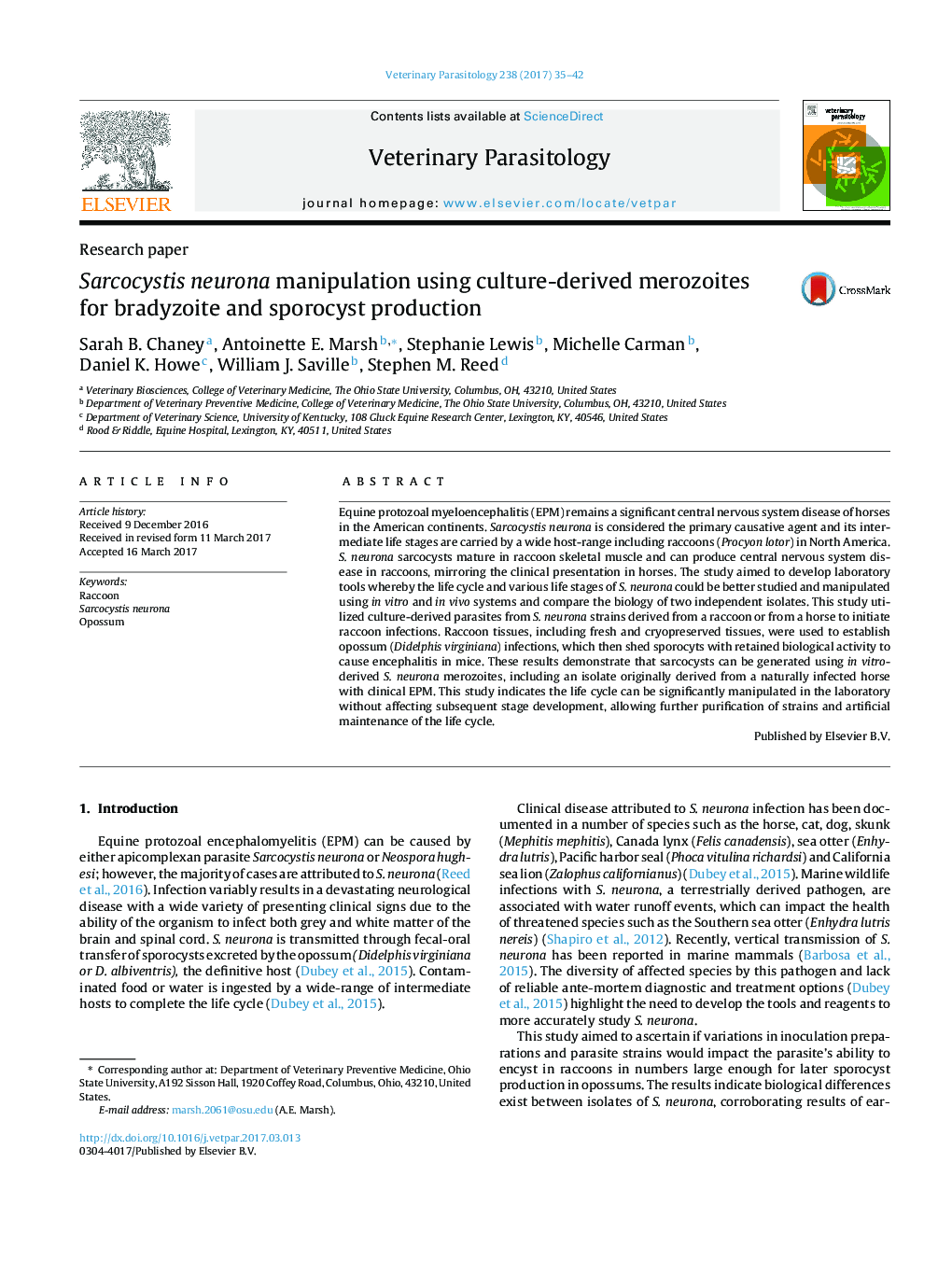| Article ID | Journal | Published Year | Pages | File Type |
|---|---|---|---|---|
| 5545735 | Veterinary Parasitology | 2017 | 8 Pages |
â¢Clinical EPM isolate, SN-MU1, produced small tissue cysts in the raccoon.â¢Cryopreserved bradyzoites produced sporocysts in the opossum.â¢Marked size differences of sarcocysts between S. neurona isolates.
Equine protozoal myeloencephalitis (EPM) remains a significant central nervous system disease of horses in the American continents. Sarcocystis neurona is considered the primary causative agent and its intermediate life stages are carried by a wide host-range including raccoons (Procyon lotor) in North America. S. neurona sarcocysts mature in raccoon skeletal muscle and can produce central nervous system disease in raccoons, mirroring the clinical presentation in horses. The study aimed to develop laboratory tools whereby the life cycle and various life stages of S. neurona could be better studied and manipulated using in vitro and in vivo systems and compare the biology of two independent isolates. This study utilized culture-derived parasites from S. neurona strains derived from a raccoon or from a horse to initiate raccoon infections. Raccoon tissues, including fresh and cryopreserved tissues, were used to establish opossum (Didelphis virginiana) infections, which then shed sporocyts with retained biological activity to cause encephalitis in mice. These results demonstrate that sarcocysts can be generated using in vitro-derived S. neurona merozoites, including an isolate originally derived from a naturally infected horse with clinical EPM. This study indicates the life cycle can be significantly manipulated in the laboratory without affecting subsequent stage development, allowing further purification of strains and artificial maintenance of the life cycle.
